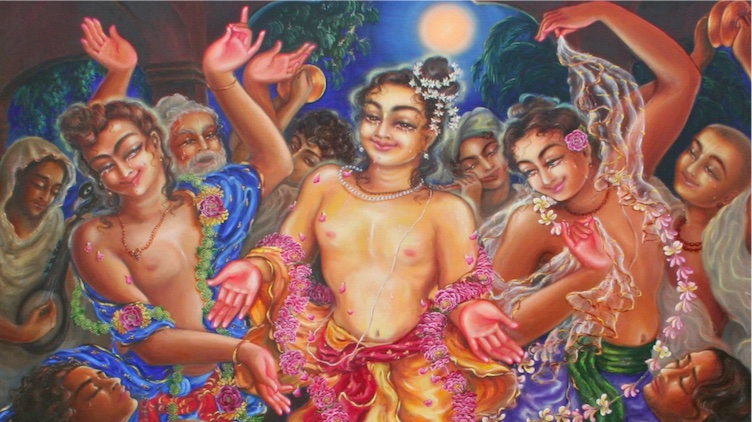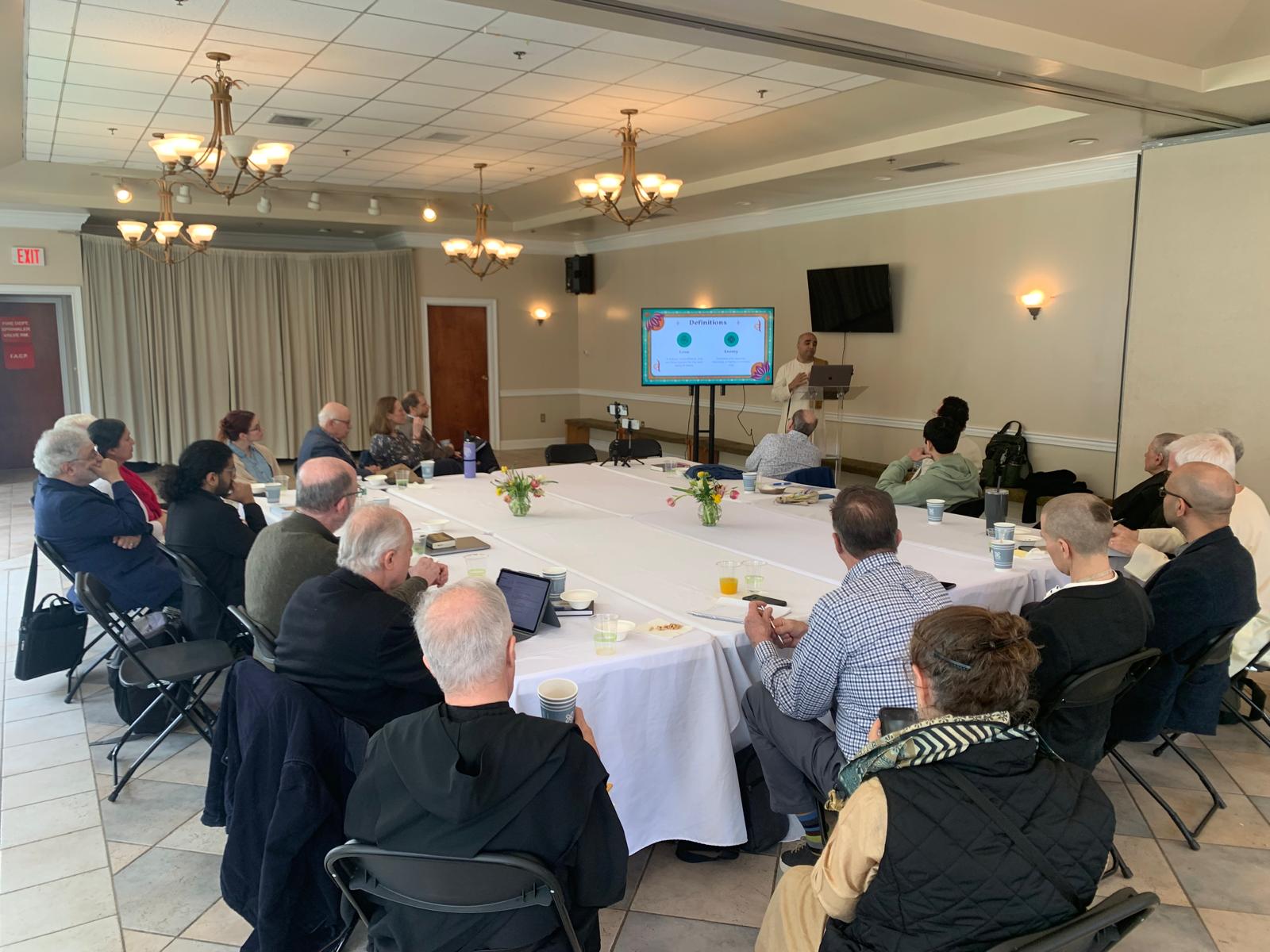Educational Series Teaches Kids About Krishna Through the Joy of Festivals
By Madhava Smullen | Mar 16, 2018

A series of PDF activity books by Urmila Dasi, now available online, teaches children about Krishna consciousness through the joyful celebration of Vaishnava festivals. Extremely popular with parents and teachers, the series is set for a more elaborately produced print version soon, and may become part of a new official ISKCON Sunday School curriculum.
Longtime educator Urmila now serves as a speaker and author of spiritual educational books for children and adults. But she taught devotee children for twenty-seven years starting in 1976, at schools in France, Detroit, and North Carolina. Writing her own curriculum, she also eventually acquired a Masters in School Administration and a PhD in Education.
Her focus has always been to give children a high quality academic program along with a fun, exciting and positive experience of Krishna consciousness.
“What happens to children when they’re very young, even if they may not remember all the details, really forms their view of the world and their view of reality,” she says.
This belief underpins Urmila’s series of festival activity books, which began as one book in 2007 while she was helping to develop the Avanti Schools in the UK.
After Avanti, Urmila wanted an independent project that could be done without significant resources or funding. She decided to use the festival activity book idea and turn it into a series.
“In the festival book we did for the Avanti Schools, each festival only had a two-page spread,” she says. “So I thought, let me take one Vaishnava festival, and expand it into a whole book.”
Over the years, with the help of volunteers Urmila created five books: one each for Gaura Purnima, Balarama’s Appearance Day, Govardhana Puja, Rama Navami, and Lord Nrsimhadeva’s Appearance Day.
To eliminate production costs, she is offering all of them as PDFs only, available to download for free at http://urmiladevidasi.org/festival-activity-books/.
Each book includes the story central to the festival, adapted from the Srimad-Bhagavatam or Sri Chaitanya-Charitamrita and presented in several different versions: one for teachers unfamiliar with the tradition; one for primary or elementary level; and one for secondary or middle/high school level.
After that, activities are presented through five different areas of focus. These are according to Panchanga Bhakti, the five most potent categories of devotional service that Rupa Goswami gives us in his Bhakti Rasamrita Sindhu. They are scripture; Deity worship; the Holy Name; holy places; and the association of devotees.
For instance, for Gaura Purnima in scripture focus, young children aged 4 to 7 can listen to a tape of Amala Bhakta Swami telling the story of the Chand Kazi disrupting the Harinama, retell it, and then discuss how or why the Kazi changed his mind. In Deity Worship, they can choose a favorite picture of Lord Chaitanya, and decorate it with garlands or necklaces by gluing on paper flowers, beads, sequins etc. In Holy Name, they can learn simplified English for the first verse of Lord Chaitanya’s Siksastakam, and act out or illustrate each part with guestures. For Association, they can learn the Pancha Tattva mantra, and their parent or teacher can discuss each person named in the mantra with them. And in Holy Places, the children can go on a “tour” through a building or outside area, pretending various places are different islands of Navadvipa.
These are just some examples – there’s a whole list of varied activities for each section.
Meanwhile, activities in each area of focus are also divided by age, with different activities for mixed age groups; 4 to 7 year-olds; 7 to 11 year-olds; 11 to 14 year-olds, and 14 to 18 year-olds.
To take in Gaura Purnima through the Deity worship focus, 4 to 7 year-olds can string necklaces to offer to a picture of Lord Chaitanya. 7 to 11 year-olds can read descriptions of various forms Lord Chaitanya showed His devotees, then create an illustration for their favorite story or act it out. 11 to 14 year-olds can make a PowerPoint show with photos of the many Deities of Lord Chaitanya. And 14 to 18 year-olds can organize their own program for Lord Chaitanya’s appearance celebration, and do everything themselves – invite guests, dress Deities, cook, lead kirtan and give class.
After each activity section, resources are provided, such as web links to buy DVDs or audiobooks, download coloring pictures, or do further reading. Aims and objectives for the activities are also listed.
A lot of thought has been put into the books, with many levels of learning considered. As well as being broken down by age groups and areas of focus, activities are also organized according to Blooms Taxonomy, or six levels of learning a topic: knowing, understanding, applying, analyzing, creating and evaluating. And finally they are organized according to Gardner’s Seven Intelligences: verbal, mathematical, visual/spatial, kinaesthetic, musical, interpersonal, and intrapersonal.
Their high standard has seen the series widely used around the world by ISKCON schools as part of their curriculum for festivals, as well as by devotee parents.
But parents and teachers have said they would prefer to purchase print editions so they could keep and treasure the books, as well as to avoid the trouble of having to download and print the free online versions.
Urmila, who did the design and layout herself on a zero budget using simple software, sees this as an opportunity to produce high quality editions with professional layout and illustrations.
She plans to produce one print book at first to gauge interest and support, then redo all her existing activity books before producing more for other festivals.
“We could do one for every festival – we still need ones for Janmastami, Prabhupada’s Vyasa Puja and Radhastami,” she says. “And once we’ve covered all the major festivals, we could do one book about the Goswamis, one about Ekadasi, one about Rathayatra, etc. We could easily cover thirty or forty festivals, although our initial aim is at least twelve.”
What’s more, each festival will not only have one book, but a whole set including a teacher’s book and one volume for each age group. Ideas are also in development for an accompanying kit with each book containing physical resources that can’t be included online such as puppets or art materials.
“The festival books will eventually be a key component in an official ISKCON Sunday School curriculum, which we are currently working with different GBC ministries to roll out,” says Urmila. “We also plan to create a teacher training course for the program.”
Urmila explains that she is ready to start producing the first festival activity book for print right away. “If someone could come forward to fund the creation of the prototype now, we could hire a short-term but full-time layout artist immediately,” she says. “We are looking for someone expert in layout who also has experience working in a school and knows what educational books look like.”
In the absence of funding, Urmila says the project could also get off the ground immediately with a layout artist who is willing to either volunteer their time or work at below market rates.
For illustrations, she is already in contact with expert artists whom she has worked with before, but once again is looking to secure funding to compensate their work.
Urmila firmly believes in the power of Vaishnava festivals as a teaching tool and positive foundation for children, and hopes that her project will attract support.
“The main way that most people relate to every religion and culture is through festivals,” she says. “Festivals are the main time when people come to a Hare Krishna temple, or gather with friends to celebrate Krishna consciousness. Festivals are a focused, directed, immersive, and joyful experience. They are associated in every culture with lights, fireworks, colors, variety and richness of food, gathering together, singing and dancing, storytelling, and dramas. And most importantly, especially for children, all these things link an individual emotionally to that worldview in a positive way.”
* * *
To download the PDF books for free, visit: http://urmiladevidasi.org/festival-activity-books/.
To learn more about the project, help with funding or volunteer your skills, please contact Urmila Dasi through her Facebook page: https://www.facebook.com/urmiladevidasi












